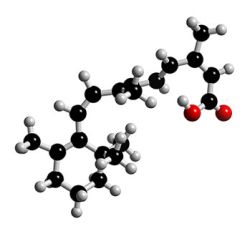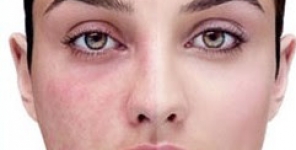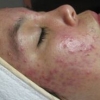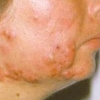Trattamento con isotretinoina dell'acne nodulo cistica con e senza la sindrome dell'ovaio policistico: efficacia e determinanti di ricaduta
 L'isotretinoina è il trattamento dell'acne più efficace e di lunga durata; tuttavia, alcuni fattori, tra cui la sindrome dell'ovaio policistico (PCOS), l'età della paziente, la storia familiare, e il tipo e il numero di lesioni da acne, può portare a resistenza al trattamento o a ricomparsa stessa dopo il trattamento.
L'isotretinoina è il trattamento dell'acne più efficace e di lunga durata; tuttavia, alcuni fattori, tra cui la sindrome dell'ovaio policistico (PCOS), l'età della paziente, la storia familiare, e il tipo e il numero di lesioni da acne, può portare a resistenza al trattamento o a ricomparsa stessa dopo il trattamento.
Lo scopo di questo studio è stato quello di confrontare l'efficacia e la permanenza di isotretinoina sistemica (SI) nei pazienti con acne nodulo cistica con e senza PCOS e di valutare i fattori associati a ricomparsa, durante il primo e il secondo anno dopo il trattamento.
Metodi e materiali: Lo studio ha riguardato 96 pazienti di sesso femminile con acne nodulo cistica. È stata data SI 0.5-1 mg/kg/dl, con una dose totale di 120-150 mg/kg. Sono stati valutati la risposta al trattamento e la ricaduta durante il primo e il secondo anno dopo il trattamento.
Risultati: Nel complesso, i pazienti con acne di cui 50 non PCOS e 46 PCOS hanno presentato risultati simili. SI è stata ugualmente efficace in entrambi i gruppi. In totale, otto pazienti hanno ripresentato la malattia durante il primo anno dopo il trattamento, rispetto a 16 pazienti per i quali la malattia di è ripresentata nel secondo anno. La ricaduta durante il primo anno è stata associata con il numero di noduli all'inizio del trattamento e il numero di lesioni papulo-pustolose alla fine del trattamento, mentre PCOS, l'età della paziente, e il numero dei noduli all'inizio del trattamento sono stati associati a ricomparsa durante il secondo anno.
Conclusione: Indipendentemente dalla sua associazione con PCOS, SI è efficace nel trattamento dell'acne nodulo cistica. In genere, i fattori associati con ricomparsa durante il primo o il secondo anno dopo il trattamento sono stati differenti, ad eccezione del numero di noduli all'inizio del trattamento.
Storia della pubblicazione:
Titolo: Isotretinoin treatment in nodulocystic acne with and without polycystic ovary syndrome: efficacy and determinants of relapse
Rivista: International Journal of Dermatology. doi: 10.1111/j.1365-4632.2012.05691.x
Autori: Gul Aslihan Cakir, Fatma Gulru Erdogan, Aysel Gurler
Affiliazioni: Department of Dermatology, Etimesgut State Hospital
Department of Dermatology, School of Medicine, Ufuk University, Ankara, Turkey
Abstract:
Background Isotretinoin is the most efficacious long-lasting treatment for acne; however, some factors, including polycystic ovary syndrome (PCOS), patient age, family history, and type and number of acne lesions, may lead to treatment resistance or relapse following treatment. The aim of this study was to compare the efficacy and permanence of systemic isotretinoin (SI) in nodulocystic acne patients with and without PCOS and to evaluate the factors associated with relapse during the first and second post-treatment years.
Methods and Materials The study included 96 female patients with nodulocystic acne. SI 0.5-1 mg/kg/dl was given, with a total cumulative dose of 120–150 mg/kg. Response to treatment and relapse during the first and second post-treatment years were evaluated.
Results In all, the 50 non-PCOS and 46 PCOS acne patients were similar. SI was similarly efficacious in both groups. In total, eight patients relapsed during the first post-treatment year, versus 16 during the second. Relapse during the first year was associated with the number of nodules at the start of treatment and the number of papulopustular lesions at the end of treatment, whereas PCOS, patient age, and the number of nodules at the start of treatment were associated relapse during the second year.
Conclusion Regardless of its association with PCOS, SI was effective in the treatment of nodulocystic acne. The factors associated with relapse during the 1st and 2nd post-treatment years differed, except for the number of nodules at the start of treatment.
https://www.youtube.com/@djfdm





